Switching to solar energy offers numerous benefits, including energy savings, reduced carbon emissions, and increased property value. However, homeowners must consider if solar roofs are worth the initial investment. This section will explore the financial aspects of solar roofs, considering the cost, long-term savings, and return on investment. It will provide an in-depth analysis of the economic factors to help homeowners make an informed decision.
Key Takeaways:
- Solar roofs are a significant initial investment but offer long-term cost savings.
- Homeowners should analyze the payback period and return on investment to evaluate the financial benefits of solar roofs.
- Financial incentives and rebates from the government can help offset the cost of installing a solar roof.
- Comparing solar shingles and solar panels can help homeowners choose the most suitable option based on efficiency and aesthetics.
- Proper installation and roof compatibility are essential for the performance and durability of solar roofs.
An Overview of Solar Roof Technology
Solar roofs, also known as solar shingles or solar tiles, are a groundbreaking advancement in sustainable energy. With solar roof technology, homeowners can harness the power of the sun and convert it into clean and renewable electricity. This innovative solution integrates photovoltaic cells, such as solar shingles or solar panels, seamlessly into the roof structure, making it an aesthetically pleasing and efficient choice for environmentally-conscious individuals.
The energy conversion process of solar roofs is simple yet remarkable. When sunlight hits the solar shingles or panels, the photovoltaic cells absorb the energy and convert it into electrical power. This power can then be used to operate household appliances, charge batteries, or even feed back into the grid, reducing reliance on traditional energy sources and lowering monthly electricity bills.
There are various types of solar shingles and solar panels available, each with its own unique features and benefits. Solar shingles, for example, are designed to mimic the appearance of traditional roof tiles, blending seamlessly with the overall aesthetic of the house. On the other hand, solar panels are typically installed in a rack system on top of the roof.
In addition to their energy generation capabilities, solar roofs offer numerous advantages over traditional roofing materials. Not only do they provide ongoing savings on electricity bills, but they also increase the value of the property. Homeowners can benefit from federal tax credits and other financial incentives, making the investment in solar roof technology even more attractive.
The Economic Analysis of Solar Roofs
Installing a solar roof requires a significant upfront investment, and homeowners need to consider the financial implications. This section will perform an economic analysis of solar roofs, analyzing the cost of installation, available financing options, and potential long-term savings. It will delve into the payback period and return on investment, providing valuable insights for homeowners considering solar roofs.
When considering the cost of solar roofs, homeowners should take into account the initial installation costs, which include the purchase of solar panels or solar shingles, as well as labor and material expenses. The cost of solar roofs can vary depending on factors such as the size of the roof and the complexity of the installation process. It is important to obtain quotes from reputable solar installation companies to get a clear understanding of the cost.
In terms of financing options, there are various ways homeowners can afford solar roofs. Many solar companies offer financing programs that allow homeowners to pay for the installation over time, making the upfront cost more manageable. Additionally, there are federal and state incentives, such as tax credits and rebates, that can significantly reduce the cost of solar roofs. These incentives, along with the potential energy savings, can contribute to the overall affordability of solar roofs.
The long-term savings of solar roofs are a key component of their economic analysis. By generating clean and renewable energy, solar roofs can significantly reduce or even eliminate homeowners’ dependence on traditional electricity sources. This can lead to substantial savings on electricity bills, especially in areas with high electricity rates. Over time, these savings can offset the initial investment and contribute to the overall financial benefits of solar roofs.
The payback period is another important consideration in the economic analysis of solar roofs. It refers to the time it takes for the savings generated by the solar roof to equal or exceed the initial investment. The payback period can vary depending on factors such as the cost of installation, the amount of energy consumed, and the local electricity rates. Generally, the payback period for solar roofs ranges from 6 to 15 years, but it can be shorter in areas with high electricity costs and generous incentives.
The return on investment (ROI) is a measure of the financial benefits of solar roofs over their lifespan. It represents the percentage of the initial investment that homeowners can expect to recoup through energy savings. The ROI of solar roofs can be highly favorable, with some homeowners achieving returns of 10% or more. The actual ROI will depend on various factors, including the cost of installation, energy consumption patterns, and the duration of the solar roof’s lifespan.
This economic analysis of solar roofs provides valuable insights for homeowners considering this renewable energy solution. By weighing the cost of installation, available financing options, potential long-term savings, payback period, and return on investment, homeowners can make informed decisions about whether solar roofs are a financially viable choice for their homes. By harnessing the power of the sun, solar roofs offer not only environmental benefits but also economic advantages that can enhance homeowners’ financial well-being in the long run.
Comparing Solar Shingles and Solar Panels
Solar roofs offer homeowners the choice between two main options: solar shingles and solar panels. This section will compare these two options, taking into account efficiency, power output, longevity, and aesthetics to help homeowners make an informed decision.
Solar Shingles vs. Solar Panels
Efficiency: Solar panels are generally more efficient than solar shingles. They can convert a higher percentage of sunlight into electricity, resulting in greater power generation for the same surface area.
Power Output: Solar panels typically have a higher power output compared to solar shingles. This means that they can generate more electricity, making them suitable for properties with higher energy requirements.
Longevity: While both solar shingles and solar panels are designed to be durable, solar panels tend to have a longer lifespan. They can last up to 25-30 years, whereas solar shingles may require replacement after 20 years.
Aesthetics and Appearance
When it comes to aesthetics, solar shingles are often considered more visually appealing. They are designed to blend in seamlessly with the roof, mimicking the appearance of traditional roofing materials. On the other hand, solar panels are typically larger and have a distinct appearance, which some homeowners may find less attractive.
Ultimately, the choice between solar shingles and solar panels depends on the homeowner’s priorities. If maximizing efficiency and power output is crucial, solar panels may be the preferred option. However, for those who value aesthetics and want their solar system to seamlessly integrate with their roof, solar shingles can offer a visually appealing solution.
Installation Process and Roof Compatibility
Proper installation is crucial for the performance and durability of solar roofs. The installation process for solar roofs involves several steps that ensure a successful implementation.
The first step in the installation process is the assessment of roof compatibility. Not all roofs are suitable for solar installations, so it’s important to determine if your roof can accommodate a solar system. Factors such as roof age, structure, orientation, and shading can impact the effectiveness of the solar panels.
If your roof is deemed compatible, the next step is the design and planning phase. A professional solar installer will analyze your energy needs, sun exposure, and available roof space to create an optimized solar system design.
Once the design is finalized, the installation of the solar panels can begin. This typically involves mounting the panels onto the roof using specialized racking systems. The installer will carefully position and secure the panels to ensure their stability and longevity.
After the panels are installed, the next step is to connect them to the electrical system of your home. This involves carefully wiring the solar panels to an inverter, which converts the direct current (DC) produced by the panels into alternating current (AC) that can be used to power your home.
Finally, the solar installer will conduct a thorough inspection of the system to ensure it is functioning properly and adheres to all safety standards. They will also provide you with information on how to monitor the performance of your solar roof and how to maintain it for optimal efficiency.
By understanding the installation process and roof compatibility considerations, homeowners can make informed decisions about investing in a solar roof. With proper installation and roof compatibility, solar roofs can provide long-term energy savings and environmental benefits.
Financial Incentives and Rebates for Solar Roof Investments
Investing in a solar roof can provide homeowners with significant financial incentives and rebates. The government offers various programs to encourage the adoption of solar energy and offset the cost of installation. By taking advantage of these incentives, homeowners can make solar roofs more affordable and enjoy long-term savings.
One of the key financial incentives is the federal solar tax credit. This credit allows homeowners to deduct a percentage of the cost of their solar roof installation from their federal taxes. Currently, the federal solar tax credit provides a 26% credit on eligible expenses. However, it’s important to note that this percentage is subject to change, so homeowners should stay updated on the available credit rates.
In addition to the federal solar tax credit, many state and local governments offer their own incentives and rebates for solar roof investments. These programs vary by location but can include cash rebates, property tax incentives, and low-interest financing options. Homeowners should research the incentives available in their area to maximize their savings.
Furthermore, some utility companies may offer incentive programs that provide additional financial benefits for solar roof installations. These programs often include net metering, which allows homeowners to sell excess electricity generated by their solar roofs back to the grid. This can result in credits or reduced energy bills, further enhancing the financial benefits of solar roof investments.
By understanding and utilizing the available financial incentives and rebates, homeowners can significantly reduce the overall cost of installing a solar roof. It’s important to research and stay updated on the specific programs and eligibility requirements in your area. Consulting with a solar energy professional can also be beneficial in navigating the available financial options and maximizing savings.
Are Solar Roofs Worth the Money?
After considering the cost, financial incentives, and potential savings, homeowners need to determine if solar roofs are truly worth the money.
This section provides a comprehensive analysis of the cost-effectiveness of solar roofs, weighing the initial investment against the long-term savings.
Solar roofs may require a significant upfront investment, but they offer long-term savings through reduced electricity bills and potential incentives.
A financial analysis is crucial in evaluating the return on investment for a solar roof. By examining the payback period and considering long-term financial benefits, homeowners can make an informed decision about this solar roof investment.
Investing in a solar roof not only saves money over time but also contributes to a more sustainable and environmentally friendly future.
provides a visual representation of the cost-effectiveness and long-term savings associated with solar roof installations.
By understanding the financial impact and long-term savings potential, homeowners can determine if solar roofs align with their goals for cost-effectiveness and environmental sustainability.
Conclusion
After a thorough exploration of solar roofs and their financial implications, it is clear that homeowners need to carefully evaluate several factors before deciding if solar roofs are worth the money. The key points to consider include the initial installation cost, long-term savings, and return on investment.
It is essential to note that while solar roofs require a significant upfront investment, they can provide substantial long-term savings on energy bills. Through reduced reliance on traditional grid electricity, homeowners can benefit from lower electricity costs and potentially even sell excess energy back to the grid.
Furthermore, financial incentives and rebates can significantly offset the cost of solar roof installation. The federal solar tax credit, state and local incentives, and other programs can make solar roofs more affordable and increase their overall cost-effectiveness.
In conclusion, the decision to invest in a solar roof ultimately depends on individual circumstances and priorities. Homeowners who prioritize long-term energy savings and have the financial means to make the initial investment may find solar roofs to be a worthwhile venture. By carefully considering the financial analysis, weighing the pros and cons, and consulting reputable experts, homeowners can make an informed decision about whether solar roofs are the right choice for their homes.







